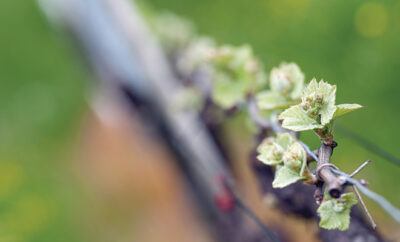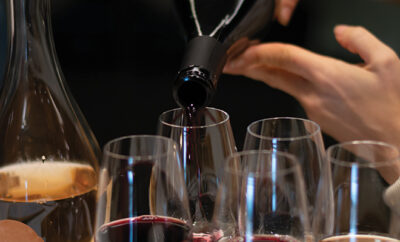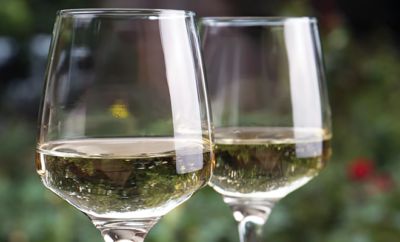
East coast wine excellence
Name a state of our United States. You have just specified one that falls within one of the 230 American Viticulture Areas with boundaries described by the Alcohol and Tobacco Tax Trade Bureau of the United States Department of the Treasury.
Yes, wine grapes are grown and wine is produced throughout America. The vitis vinifera grapes have had several resurgences and a steady growth of success dating back to the days of Thomas Jefferson, well-documented wine lover and enthusiast. Although Jefferson tried to grow both French and Italian varietals in Virginia at Monticello, the vineyard managers of that time were more versed in managing plantations of other crops than navigating the intense winters of the East Coast for successful wine-grape harvest and production.
Fast forward to the 1950s, when herbicides and pesticides were fine-tuned for the vineyards, and we see successful wine-grape production that is sustained even through the incredible East Coast humidity, pests and disease that erode the quality of the grape vine. It was then possible to have successful grape production beyond table grape juice, moving into fine, lean wines of multiple varietals. California vineyards were already seeing success in this area, creating an environment for grapevines that are now 120 years old or more.
The great wines of the East Coast sometimes receive less attention due to production channels or media attention. Many vineyards and wineries sell their limited production directly to consumers through tasting room marketing and activities rather than large distribution channels; publications may profile these producers but the audience can be limited to wine and restaurant industry readers rather than the consumer, who relies on wine promotions through their local markets. But this is all the more reason for the wine lover to shop local and know the wonderful varietals grown in their region.
From New York to North Carolina, here are a few gems of the East Coast to watch for during your summer travels:
New York
Finger Lakes Wine Country embraces more than 120 producers of wine, beer and spirits. If you’re planning travel around Cayuga Lakes, Seneca or Keuka, you’re likely to come across lively wine events and festivals that you can explore. A variety of maps will take you through wine trails that include restaurants and activities relating to the importance of the vineyard, where everything must begin. In addition to Rieslings and Gewurztaminers, the cool climates of the Finger Lakes Region also create quality Pinot Noir and Cabernet Franc. Usually, extreme cold weather would not be good for these varietals, but the lakes help keep the air from freezing and create the gentle breezes during the summer to ripen the fruit on the vine.
A wine-tasting excursion in this region can include three to five wineries in a day with a designated driver; expect nominal tasting fees that are often refunded with purchase. If events are your preferred gateway to wine, you’ll be thrilled with wine events that pair with bread making, theatre or auto racing. In July, the Finger Lakes Wine Festival held at the Watkins Glen International race track showcases more than 80 wineries paired with regional artisans, music and culinary classes.
Virginia
The state of Virginia supports the success of the wine industry with more than 250 wineries producing award-winning wines. One surpriseswas Vidal Blanc, a grape variety that does extremely well in cold conditions, providing a quality juice for ice wines. Merlot, cabernet sauvignon, petite verdot, chardonnay and viognier are the premier varietals you’ll find in the wine regions of Virginia. With scenic and historic backdrops, one of the most popular summer events is July’s Horse & Hound Wine Festival featuring music, foods, parades of horses and, of course, a complete tribute to the Commonwealth of Wine, an item of pride for the wine producers of Virginia, who have designated October as Wine Month.
North Carolina
There are more than 100 wineries spread over 400 miles in North Carolina, producing cabernet sauvignon, cabernet franc, merlot, syrah, chardonnay and viognier. From east to west, the wine growing areas vary throughout distinct wine regions depicted as Haw River Valley, Yadkin Valley and Swan Creek appellations spanning mountainous and coastal terroir. Emerging from the inventiveness of Sir Walter Raleigh, the resulting vineyards that still contain native muscadine grapes provide high levels of heart-healthy resveratrol and other health-enhancing antioxidants. Post-crush grape skins are often sold to nutraceutical companies for production of a variety of natural remedies.
There are many more areas of the Atlantic that deserve recognition and additional exploration, such as Tennessee, Georgia and Alabama. May your summer wine travels be successful and filled with a palate open to embracing wine from across the United States. HLM
Sources: fingerlakeswinecountry.com, ncwine.org, thedrinksbusiness.com, virginiawine.org and winespectator.com.







